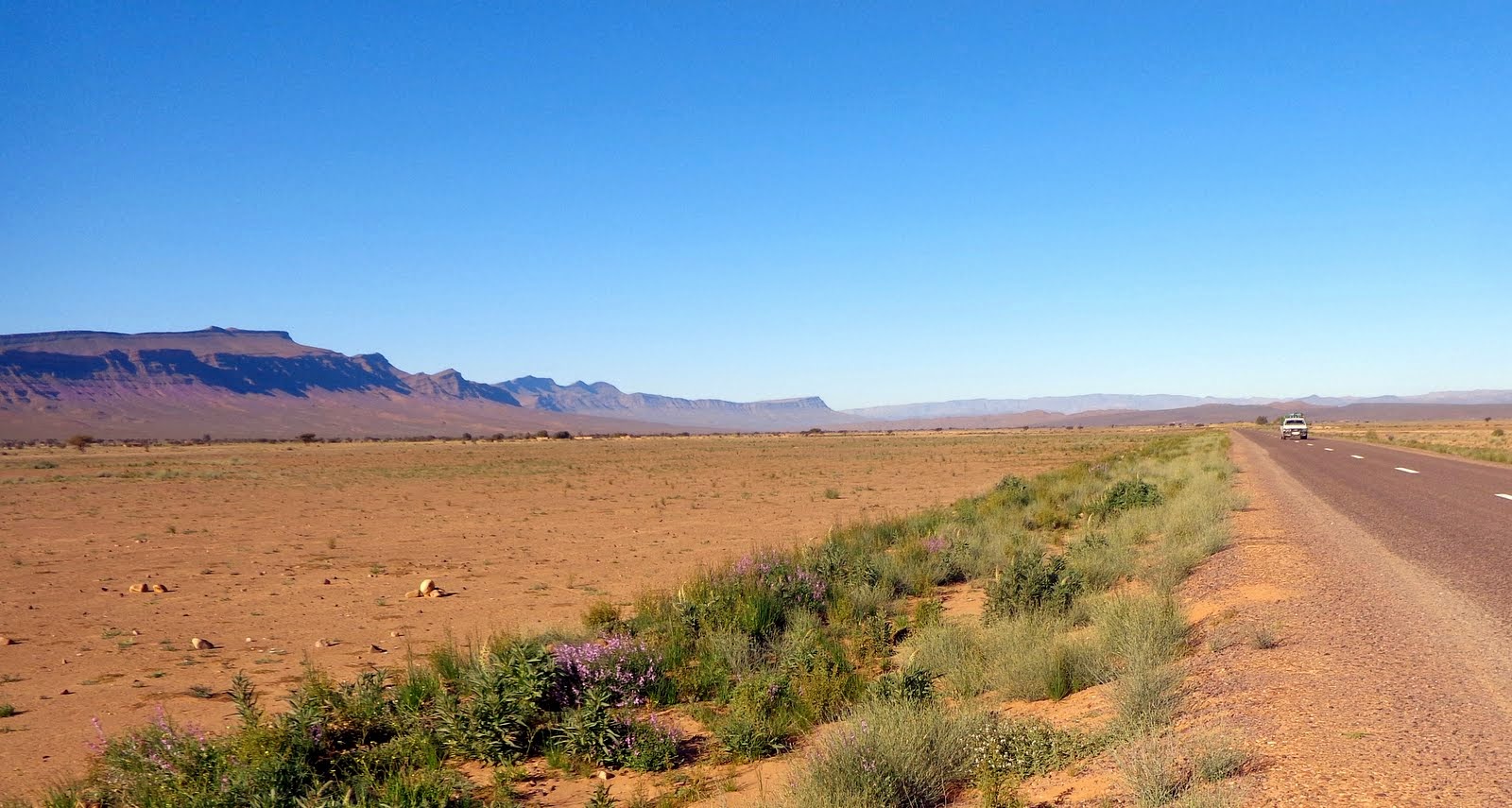We started south on the road to Tata which we had never used before. We got to Igherm on market day. It is on;y 50 miles from Taroudant but seemed to have moved back half a century. In Taroudant the vast preponderance of women are unveiled so it was a surprise that in Igherm about 95% of the women were fully veiled. We went on to Tata for lunch and then across to Foum Zguid.
The landscape became increasingly arid with only a few scattered thorn trees, although there were still signs of the late November rains both on washed out bridges and a slight coverage of green in places.
It reminded me of pictures of the sub-saharan veldt a la Armand and Micheala Dennis.
The mountains looked particularly good with a stripe of purple which turned out to be a particular plant which grew in a ban and halfway up the elevation.
There were also strips of vegetation where the raised road caused moisture to accumulate to the sides.












